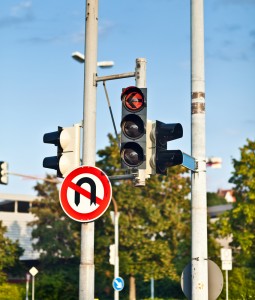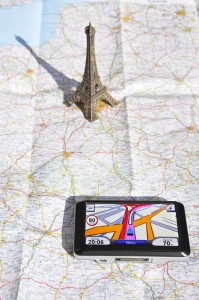According to the U.S. State Department, motor vehicle crashes — not terrorism, crime, infectious disease or plane travel — are the number one cause of death to healthy Americans traveling abroad. Often we’re out of our element when we’re far from home, sometimes causing us to forget common sense precautions that could save our lives. You don’t have to let this happen to you!
Here are 7 simple precautions you can take to help keep you safe behind the wheel on your next international trip:
1. Do Some Pre-trip Planning
 Before leaving for your trip, it is important to understand the laws and driving customs in your destination. The US Department of State has a road safety section for every country in the world in their country specific information pages; additionally, you can obtain a copy of a country’s driving laws from the country’s embassy in the United States, foreign government tourism offices, or from a car rental company in the destination. Or, even easier – you could ask your travel assistance provider to provide you with this information instead.
Before leaving for your trip, it is important to understand the laws and driving customs in your destination. The US Department of State has a road safety section for every country in the world in their country specific information pages; additionally, you can obtain a copy of a country’s driving laws from the country’s embassy in the United States, foreign government tourism offices, or from a car rental company in the destination. Or, even easier – you could ask your travel assistance provider to provide you with this information instead.
And don’t forget—even pedestrians need to be well-versed in the driving habits of their destinations – most victims of car accidents abroad are not drivers or passengers, but bystanders. Curious which locations abroad rank as the most dangerous for drivers? Budget.com’s recent research suggests staying off the roads of Johannesburg, South Africa (the carjacking capital of the world) as well as the perilous, cliff-facing back roads of Bolivia and the chaotic, cow-filled roadways of India.
2. Get an International Driving Permit
International Driving Permits (IDPs) are valid in more than 150 countries and contain your name, photo and driver information translated into ten languages. According to the American Automobile Association (AAA), even if you’re not planning on driving, having an IDP with you is still a good idea. Why? In the event you need to communicate with foreign authorities, this recognizable form of identification can help you get on your way more quickly. If you’re not sure how to obtain your IDP, your local AAA office or a travel assistance company like On Call International can give you a hand before your trip.
3. Pack a First-Aid Kit
Savvy travelers know to pack a small first aid kit so they have necessary emergency supplies at their fingertips. This is especially useful when your travels take you off the beaten path and a drugstore is not around the corner. The Centers for Disease Control’s website has some great advice for creating a travel first aid kit.
You’re probably asking yourself, “Can I bring the GPS I bought in the United States to another country?” Yes! But, you will most likely need to buy the maps for your destination (with some exceptions, so make sure to check with your GPS manufacturer). A word to the wise: if you rent a navigation device from your car rental company abroad, make sure it speaks English (or whatever language you’re most comfortable with) before you leave your car rental location.
5. Consider Your Auto Insurance Options
In general, just like your health insurance, your US auto insurance does NOT cover you abroad (there may be some exceptions to the rule if you’re a US citizen traveling to Canada and Mexico). When renting a car overseas, make sure the rental company provides auto insurance with the rental package. In some cases, you may need to consider purchasing additional insurance coverage if the coverage they provide is not at least equivalent to what you carry at home.
6. Don’t Forget Your Travel Assistance Membership
According to the Centers for Disease Control, nearly half of all medical evacuations back to the United States result from a car crash; and, unfortunately— they don’t come cheap—depending on your destination, medical evacuations can cost upward of $100,000 (and are often not covered under most travel insurance plans). While most of us will never experience an emergency while traveling, accidents can – and do – happen. Purchasing a travel assistance membership that includes medical evacuation coverage from a company like On Call International ensures you have access to life-saving assistance when you need it most and lessens the financial impact of a medical evacuation back home.
7. Play By the Rules
Before getting behind the wheel, make sure you know the answers to these key questions— many  countries’ road rules are quite different from those in the US:
countries’ road rules are quite different from those in the US:
- Which side of the road do they drive on?
- Can you turn right at a red light?
- Can you use a cell phone while driving?
- What is the country’s seatbelt law?
- What is the country’s minimum and maximum driving age?
- Do you need to honk your horn before going around a sharp corner?
- Do you need to flash your lights before passing?
- Do you need any special road permits (instead of tolls) to use their highways? Many countries will fine those found driving without a permit.
- Is night driving discouraged? (many countries, particularly in rural areas, discourage night driving because headlights are often turned off, as drivers erroneously believe it saves the batteries)
We’d love to hear from you! Share your own international driving tips in the comments below. Safe travels!



